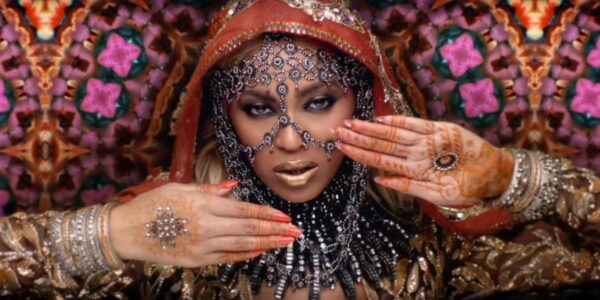Is borrowing from another culture a tribute—or a transgression? Cultural appropriation or appreciation?
Introduction: Where Is the Line?
From runway models in Indigenous headdresses to celebrities sporting bindis at music festivals, the world has witnessed countless controversies over cultural elements being used outside their original contexts. In a globalized world where cultures intersect daily, one complex question continues to resurface:
When does cultural sharing become cultural stealing?
The debate around cultural appropriation versus cultural appreciation is as nuanced as it is necessary. While some argue that drawing inspiration from other cultures can be a sign of admiration and curiosity, others view it as a form of exploitation—particularly when power imbalances are involved.
So how do we navigate this fine line between embracing and erasing?
What Is Cultural Appropriation?
Cultural appropriation typically refers to the adoption or use of elements of one culture by members of another—especially when the dominant culture borrows from a historically marginalized one. This can include fashion, hairstyles, music, food, language, or spiritual symbols.
It becomes problematic when:
- The borrowing strips context or meaning from the original culture.
- It commodifies sacred or symbolic traditions for profit.
- It ignores or silences the voices of people from that culture.
Example: Wearing a kimono without understanding its cultural significance or marketing Indigenous beadwork without crediting its origins is often seen as appropriation, not appreciation.
The key issue? Power and privilege. When dominant groups profit from or glamorize cultural elements while the originators are discriminated against for them, appropriation enters the room.
What Is Cultural Appreciation?
Cultural appreciation, on the other hand, is about engaging with a culture in a respectful, informed, and meaningful way. It involves a genuine effort to understand the history, context, and significance of the cultural elements you’re embracing.
Appreciation looks like:
- Learning from members of the culture directly.
- Giving credit and proper representation.
- Supporting artisans, creators, or businesses from the original community.
- Acknowledging the cultural roots behind what you’re enjoying.
In short, appreciation says: I see you, I value you, and I’m here to uplift your story—not to take it as my own.
Fashion, Festivals, and Faux Pas
One of the most frequent battlegrounds for this debate is the fashion and entertainment industry. Designers often reference traditional garments—from African prints to Indigenous beadwork—without proper attribution or understanding.
Take Coachella, for instance. The festival has become a flashpoint for cultural appropriation debates, with non-South Asian attendees wearing bindis or Native American war bonnets for aesthetic purposes. These items often have deep spiritual or ceremonial meaning—not costume appeal.
Even high fashion isn’t immune. Luxury brands have come under fire for:
- Replicating Mexican embroidery without involving local artisans.
- Using Sikh turbans or hijabs on runways with zero cultural connection.
- Selling mass-produced versions of sacred symbols for thousands of dollars.
The fallout? Rightful criticism, public backlash, and growing calls for accountability.
Why Intent Isn’t Always Enough
A common defense is, “I didn’t mean to offend anyone.” But in cultural dynamics, impact matters more than intent.
You may not intend harm when you wear dreadlocks, eat pho, or use tribal prints—but if the act reinforces stereotypes, erases history, or capitalizes on marginalized identities, it can still cause damage.
Think of it this way: Cultural heritage is not a costume. It’s not something to be picked up for aesthetic value and dropped when it becomes inconvenient.
Can Cultures Ever Truly Be Owned?
Here’s where the conversation gets even trickier.
Some argue that culture is fluid, constantly evolving, and naturally shared. After all, fusion cuisine, global fashion trends, and multilingual slang are products of cross-cultural exchange. And yes—cultures do borrow from each other organically over time.
But the problem isn’t the exchange—it’s the exploitation.
When the borrowing is extractive, profit-driven, or done without respect, it shifts from exchange to erasure. Cultural appreciation invites collaboration. Cultural appropriation takes without giving back.
How to Engage Respectfully: A Quick Guide
Curious about another culture? That’s a beautiful thing. The goal isn’t to build walls between communities but to foster understanding across them. Here are some ways to engage respectfully:
✅ Do Your Homework
Understand the history, meaning, and relevance behind cultural items or practices. Avoid surface-level interaction.
✅ Support Creators from the Culture
Buy from local artisans, listen to authentic voices, and credit the origin of what you share.
✅ Ask Questions, Stay Humble
Don’t assume you know everything. Ask, listen, and be open to correction.
✅ Acknowledge Privilege
Recognize that what might be “cool” for one person can be criminalized for another. (Think: cornrows vs. workplace discrimination.)
The Future: Towards Cultural Collaboration
The answer isn’t to silo ourselves or be afraid of cultural curiosity. It’s to move toward cultural collaboration, where both sides participate, share, and benefit.
Imagine:
- Fashion collections co-created with Indigenous designers.
- Artists amplifying the voices of cultural communities they admire.
- Schools and media providing deeper cultural education.
In these instances, cultural exchange becomes a bridge—not a battleground.
Conclusion: Beyond Performative Respect
The line between cultural appropriation and appreciation may not always be clear—but intention, education, and action can help draw it.
Ask yourself:
- Am I honoring the culture or using it for aesthetics?
- Am I listening to and uplifting the voices within that culture?
- Am I benefiting from something that others have been marginalized for?
If your answers come from a place of empathy, openness, and accountability, you’re already on the right side of the conversation.
Because in the end, true cultural appreciation is about more than love—it’s about respect.







